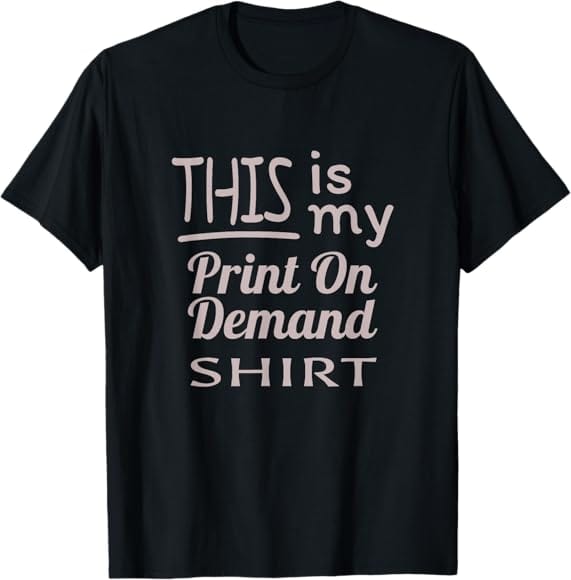When deciding on a platform for your print-on-demand (POD) t-shirt business, it’s essential to choose a model—active or passive—that aligns with your goals, resources, and level of involvement. Below is a breakdown based on the pros and cons highlighted in the provided transcript.
Building an active print-on-demand business with your own website lets you take full control of your brand, from its identity to customer relationships. This gives you the freedom to stand out and grow on your terms. While it takes more effort upfront, the rewards of higher profits, loyal customers, and a lasting brand presence make it a worthwhile investment.

1. Passive Print-on-Demand Platforms
Passive POD is ideal for beginners or those who prefer a hands-off approach. The platform handles traffic, orders, fulfillment, and customer service, allowing you to focus on creating designs. Here’s why passive POD is recommended for many new sellers:
Platforms to Consider
- Amazon Merch on Demand
- Largest e-commerce platform with enormous traffic (750M monthly visitors).
- You earn royalties while Amazon manages fulfillment and customer service.
- It is free to join but requires application approval.
- For example, profit is $5 per t-shirt; selling 50 units can yield $250/month from one design.
- Redbubble
- A marketplace focused exclusively on POD products.
- Offers niche-focused audiences with designs for various products (e.g., apparel, stickers, art prints).
- Handles everything from printing to shipping.
- It receives about 10M monthly visitors, specifically for POD items.
- TeePublic
- Smaller but still effective, with ~1M monthly visitors.
- It is owned by Redbubble, which has a similar structure and customer base.
Why Choose Passive POD?
- There is no need for a standalone website or upfront investments in ads.
- Easier entry, especially for beginners or those who want to test designs.
- Minimal operational responsibilities.
2. Active Print-on-Demand Platforms
Active POD involves building and marketing your brand. While it provides complete control, it also requires more time, effort, and financial investment. These platforms are better for those ready to scale and manage a standalone business.
Platforms to Consider
- Printful
- High-quality printing and integration options with platforms like Shopify or WooCommerce.
- It is ideal for creating a brand and controlling customer experience.
- Printify
- Offers competitive pricing and access to various print providers.
- Integrates seamlessly with Shopify and other e-commerce platforms.
Requirements for Active POD
-
- Website setup: Typically requires platforms like Shopify ($39/month after the first month).
- Traffic generation: You handle marketing via social media, SEO, or paid ads.
- Upfront costs: You pay for fulfillment upon order placement.
- Customer service: You’re responsible for handling buyer inquiries and issues.
Why Choose Active POD?
- It is ideal for building a custom brand and scaling a full-fledged business.
- You retain complete control over pricing, branding, and customer interactions.
- Higher profit margins than passive POD but requires consistent effort.
Recommendation for Beginners
Start with passive print-on-demand platforms like Amazon Merch on Demand, Redbubble, or TeePublic. These platforms:
- Minimize upfront costs and operational headaches.
- Offer built-in traffic, removing the need for extensive marketing efforts.
- Allow you to test designs and understand customer preferences before committing to a more resource-intensive model.
Once you gain experience and confidence, you can explore active POD options to scale your business with your branding and higher profit margins.
- Facebook Ads to Get Followers! - December 27, 2024
- ClickUp vs. Slack - December 20, 2024
- Mastering E-Commerce Analytics: A Blueprint for Success





